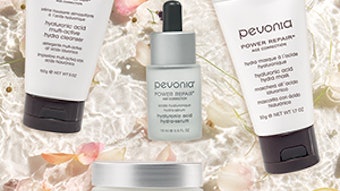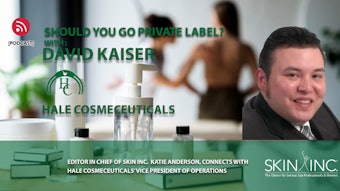
Money creates its own mythology. It has become a powerful symbol of success, personal worth and social status. And spending can be fun—it can even make you a bit giddy, at least until the bill arrives, and that’s the trouble. My mantra on the subject is this: You can die looking good.
Both professional and personal success depend upon a healthy relationship with money and a good sense of how to budget, invest, spend and save. Traditionally, in every culture I can think of, saving and conserving are seen as virtues. Wealth, if present, has been kept completely private and discreetly concealed. Aesop’s Fables praises the thrifty ant that gathers and stores supplies in anticipation of winter, and it scorns the light-hearted grasshopper, who prefers to fiddle the warm summer days away with no thought of the future. And even religious ascetics of many traditions have taken vows of poverty.
However, times change. Today, lavish consuming and spending often are interpreted as very public proof of having arrived, and the flames of consumerism are fanned by our love of celebrities. We covet the brands they endorse. And perhaps inspired by the meteoric rise of endless Britneys and Nicoles, there is no denying that baby boomers and subsequent generations are seekers of instant gratification. We want our candy, and we want it now.
This attitude—what behaviorists call a lack of impulse control—can quickly cause our credit cards to self-ignite, possibly explaining why the young woman working in her first professional position needs to spend $3,000 on an “it” bag. It’s dangerous both personally and professionally. Am I a penny-pincher? Not exactly. But I do know from experience that spending must be strategic in order to serve you in the long run.
Making money
Think of money as power units, similar to calories or the stoked-up cells of a new battery. Every U.S. dollar, British pound, euro, franc and yen represents stored energy.
Open the cash register or your wallet and have a look at the money, including the credit card receipts. Really think about what it took to get it there. If you got paid $90 for a 9 am treatment this morning, that means you had to get up, shower, brush your teeth, have a cup of coffee, get yourself to work, prepare the room, turn on your smile, greet the client and give the treatment.
And still, chances are that $90 isn’t pure profit. Just turning on the lights, the heat or air-conditioning and water costs X amount of dollars per hour—not to mention rent, insurance and your other business-operating costs. So giving that $90 the respect it deserves, how will you spend it for your business?
Selective spending
Many new spa owners get carried away with décor. They have to have the chi-correcting feng shui fountain, the koi pond, the thousand-gallon saltwater fish tank, flat-screen televisions, potted orchids replaced weekly by the local nursery, fantastic furniture in the waiting room and so on. This is the first big red flag, because you really don’t need to spend a lot on décor.
Here’s what you need to get started: perfectly functioning, well-maintained water and power appliances and high-quality lighting that’s adjustable, with bright light for the reception desk and soothing light for the treatment room. You must have modern, hygienic surfaces—specifically walls, counters and floors—that can be readily sanitized to hospital-level cleanliness daily. And you should probably plan on a fresh coat of paint. These utilitarian necessities represent a substantial investment, and they may not strike you as glamorous, but without these fundamentals, your service business has no foundation.
In terms of physical function, your place of business must always be pristine, squeaky clean, well-ventilated, a comfortable temperature and appropriately lit. Make this your décor priority throughout your first year of business. In this case, keeping it simple will help to make it profitable.
Creating a buzz
Advertising is another spending quagmire. As soon as word is out that you are in business, you will be approached by individuals selling display ads for the local phone book, radio station, magazine, newspaper and more.
Print advertising is carried out these days primarily for image. Ralph Lauren runs his regular 12-page photo spreads in Vogue because these signature images visually tell the story of his all-American brand. And, because we know that each page costs literally millions of dollars, the ad spreads are a confirmation of his brand’s huge success. Good for him.
Most likely, you are not yet in this position. Advertising typically won’t do much for enriching your bottom line at this stage in your development, unless the ad is part of a very targeted community marketing effort. For instance, if your place of business is beside or within an outlet mall that attracts visitors by the literal busload, it may serve you to place an ad in a publication created by the center so shoppers will come to you for a retail relief mini-treatment after feverishly snapping up bargains.
Also, I am not an advocate of couponing or offering discounts in the form of a print ads, as I believe this weakens your credibility and cheapens your brand essence.
My advice overall is to skip conventional advertising altogether and instead make your business a presence in the local community in other ways. Find a local cause that you feel passionate about, volunteer some time for the cause itself, and then offer your skin care services in a unique and creative way. For instance, if an urban garden is being created in your city, offer your own talented hands to do some clearing, digging, lifting, weeding, watering and seeding during the transformation.
And yes, wearing your spa’s logo t-shirt is a good way to advertise your skin care center when you’re getting involved. It seems everyone wears somebody’s logo these days, so you may as well wear your own. There may be media at the event, but even if this is not the case, people will ask you about your business. Tell them.
Most importantly, though, get friendly with the people who conceived, planned and carried out the project. Create a skin care treatment specifically for gardeners, who are exposed to UV rays and whose hands take a beating even when wearing gloves. Create a small card to be distributed to people associated with the community garden, and offer a soothing aromatherapy hand massage or foot massage as a bonus when booking a standard skin care treatment. Any quick printer can lay out, print and cut the cards for you, and they should be the size and weight of a business card or a bit larger. Of course, print them on green and ideally recycled card stock, and make sure the card offers this special service, along with your name, the name of your spa, phone number, e-mail address, business hours, street address and any needed parking information. Distribute these cards at all the related functions, and be sure organizers have a supply of their own.
This low-tech approach—called viral or buzz marketing—builds word of mouth and referrals. Done in this way, this form of marketing also establishes you as someone connected to the community at large. Then, when the community project is well-established, consider adding the Gardener’s Treatment to your menu for your general clientele.
And you can do something along these lines for any community cause. I tend to choose events and projects that directly benefit women and children. Examples would be the building or improvement of a library or arts center, a women’s shelter, or the opening or expansion of a playground, park or day care center. Whatever connects you to the community is a great starting place for building a heartfelt grassroots campaign, and that will cement your standing with your clientele.
Invest in yourself
Now, in terms of where to spend your money, the most significant investment will always be in the skills of yourself and your team. Education on an ongoing basis is crucial to your success. And I am referring to education that goes far beyond your technical skill in performing a painless extraction. I mean classes that build your skills in basics such as math, budgeting and bookkeeping.
Another part of how you build education into your business plan is choosing a product line that offers education as part of its corporate program. Does the skin care brand you carry offer education not only in how to use its products, but also in how to direct and maintain your own bottom line? The lesson here is not to be swayed by a flashy product in a trendy package that does a lot of advertising. Choose a hard-working brand that works for you by offering education.
In addition to product classes, which generally are offered by major brands at no charge, you also owe it to yourself to actually part with some cash for postgraduate classes not offered by manufacturers. This kind of third-party professional training in everything from adult acne to marketing to men is how you drive your skill level progressively higher in order to command the premium pricing you deserve to charge.
In short, forgo that mural of Botticelli’s Birth of Venus on your wet room wall, and put the money into classes for yourself and the team throughout the year.
Money-minded
Perhaps the consoling bit to remember is this: Exerting a bit of self-control now will give you more—not less—financial clout and flexibility later. Delaying gratification is actually not deprivation, it’s a form of enhancing gratification later, and understanding how your budget works requires a willingness to forfeit some immediate impulses. You must weigh every purchase as a potential factor in your success. But remember, the key is to make it pay off. Willingness equals control, which leads to greater, more consistent cash flow, better credit, more investment opportunities and—dare I say it—more fun.










